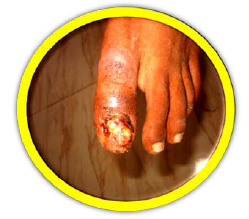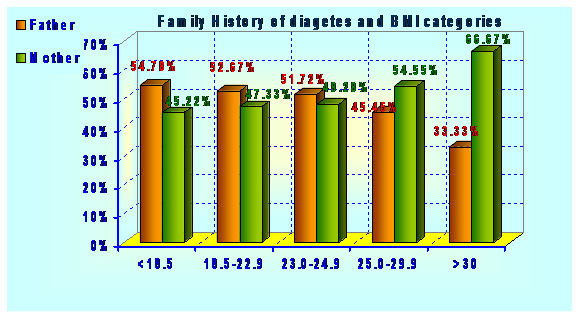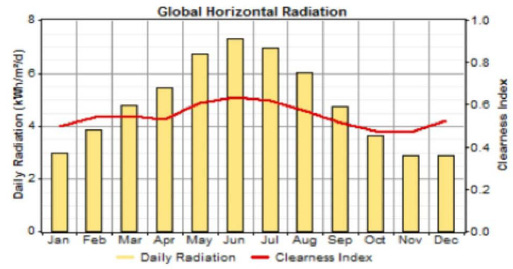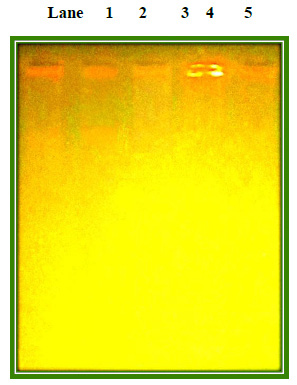Department of Petroleum Engineering, Marvdasht Branch, Islamic Azad University, Marvdasht, Iran
Corresponding author Email: dabiri211@yahoo.com
Article Publishing History
Received: 17/12/2016
Accepted After Revision: 17/03/2017
Oil production is affected by the reservoir pressure, where the higher the reservoir pressure, the higher the production rate. In most cases, water is also produced with oil, which can cause several negative issues. In oil wells, after a short period of oil production, early water production will cause serious decrease in oil production. Actually water coning is an event in which water and oil surfaces will move simultaneously to the well perforation. This event, if occurs in a well, will affect the well production and will increase the costs. Consequently, the production life of the well will be shortened. This paper presents the results of simulation study of an under saturated oil reservoir with no primary gas cap present in the reservoir with oil API gravity of 35. The feasibility of water coning remedy through drilling new horizontal and vertical wells was investigated using ECLIPSE software. The simulation results showed that water production rate is increased with increasing the oil production rate from the reservoir. In addition, water coning was significantly reduced with drilling new horizontal and vertical wells. However, horizontal wells found to be more effective than the vertical wells. The oil production rate increased with horizontal wells while water production rate decreased significantly.
Water Coning, Horizontal Wells, Simulation, Flow Rate
Dabiri A, Karaei M. A, Azdarpour A. Simulation Study of Controlling Water Coning in Oil Reservoirs Through Drilling of Horizontal Wells. Biosc.Biotech.Res.Comm. 2017;10(1).
Dabiri A, Karaei M. A, Azdarpour A. Simulation Study of Controlling Water Coning in Oil Reservoirs Through Drilling of Horizontal Wells. Biosc.Biotech.Res.Comm. 2017;10(1). Available from: https://bit.ly/2KpKT04
Introduction
One of the permanent problems in oil and gas production from reservoirs is undesirable water production. Fluids have a high tendency to flow through highly permeable regions those are generally found due to natural non-uniformity of reservoirs. This problem of water production is especially serious in reservoirs with active water drive and even may cause stoppage of oil or gas production from such reservoir. Water production in gas wells will kill the well, because it doesn’t have the ability to carry water to the surface. In the oil wells, on the other hand, this increases the cost of water-oil separation and maintenance in surface equipment. In more serious situations it may cause stoppage of production and so huge amounts of oil to remain unproduced in the reservoir (Zaitoun and Kohler, 1999, Faber, 1999, Hongyin and Peimao, 2000; Ji et al., 2012; Song et al., 2013; Chuanzhi et al., 2014).
During geological eras, the reservoir fluids have been settled under an equilibrium static pressure. The attempts to produce oil from the reservoir, will result in a pressure decrease around the reservoir. If the exerted drainage pressure is greater than pressure difference between oil and water or oil and gas cap, water or gas will also be driven into the well. In a classic description, a uniform oil layer has a layer of water below itself or a gas cap above and a vertical well inside it. The oil-water or oil-gas interface flows toward the well making a conical shape; so it is called water coning or gas coning (Dietz, 1975, Zaitoun and Kohler, 1999, Hachinson and Kemp, 2010; Hasan et al., 2013; Ansari and Johns, 2013; Wu
et al., 2014; Fan et al., 2015).
Water or gas coning is one of the most complicated problems in oil production, which is a function of rock and reservoir fluid properties. The created cone may be stable or unstable. There are different solutions in order to control or eliminate water coning; one solution is decreasing production rate and one another is drilling a horizontal wells. The former can prevent or delay water coning, but also may make production process unprofitable in many situations. On the other hand, by drilling a horizontal well long enough we can achieve minimum drainage pressure. Although in this situation too production rates may be low, because of long length of the well, higher production rates are available. Therefor by horizontal wells, it is possible to increase production rate in low (drainage pressure) i.e. though tendency to water coning is minimum, high production rates are predictable by horizontal wells (Hachinson and Kemp, 2010; Duan et al., 2011; Bahadori and Nouri, 2012).
Since 1980 the technology of horizontal oil wells has been resulted in a new attention to the reservoirs with high risk of water coning, the wells those were actually push aside. Drilling horizontal wells is started in 1927. However, they are seriously employed since 1980. Horizontal wells are used in oil production from reservoirs with low thickness, naturally fracture reservoir, formations with the risk of water or gas coning, heavy oil reservoirs and low permeable gas reservoirs (Dietz, 1975; Elgibaly et al., 2016; Wang et al., 2016; Razavi
et al., 2017).
The main advantage of horizontal wells from engineering point of view is using a line for production instead of a point (vertical well). A horizontal well can produce more flow than a vertical well in the same flowing pressure loss, or can have same production rate in a lower flowing pressure loss. This may delay water coning in water drive reservoirs. The studies have been proved that critical production rate of horizontal wells is 3-20 times greater than that of vertical wells (Giger, 2013; Shahbazi et al., 2016; Razavi et al., 2017).
MATERIALS AND METHODS
THE STUDIED RESERVOIR AND ITS SPECIFICATIONS
The reservoir we have studied is an under saturation reservoir without primary gas cap. It is a normal reservoir, which in 5th layer is in contact with an active aquifer. The reservoir fluids are water, oil and dissolved gas. The oil API is 35. Based on geological data, the reservoir has 3 faults. According to these faults, the reservoir has 4 regions one of them is an equilibrium region. The specifications are listed in tables 1 and 2. In this model, the reservoir is divided in 35, 35 and 5 parts in X, Y and Z directions.
| Table 1: Petro-physical properties of the reservoir | ||
| Snark Reservoir characteristic | ||
| 0.04425 | (layer 1) | Porosity
|
| 0.01485 | (layer 2) | |
| 0.0406 | (layer 3) (ave.) | |
| 0.02955 | (layer 4) (ave.) | |
| 0.037 | (layer 5) (ave.) | |
| 2455 | (layer 1) (ave.) | PermX (md) |
| 11 | (layer 2) | |
| 825.26 | (layer 3) (ave.) | |
| 20 | (layer 4) (ave.) | |
| 1300 | (layer 5) (ave.) | |
| 2455 | (layer 1) (ave.) | PermY (md) |
| 11 | (layer 2) | |
| 825.26 | (layer 3) (ave.) | |
| 20 | (layer 4) (ave.) | |
| 1300 | (layer 5) (ave.) | |
| 11 | (layer 1) (ave.) | PermZ (md) |
| 1.09 | (layer 2) | |
| 71 | (layer 3) (ave.) | |
| 50.44 | (layer 4) (ave.) | |
| 84 | (layer 5) (ave.) | |
| Table 2: Reservoir properties | |
| Snark Reservoir characteristic | |
| 260 | Dx (ft) (ave.) |
| 300 | DY (ft) (ave.) |
| 115 | DZ (ft) (ave.) |
| 2552 to 3235 | Tops (ft) |
| 1.0 | Net to Gross ratio (NTG) |
| 5684 | Pressure (psia) |
| 260 | Temperature (F) |
| 0.8268 | Initial Oil saturation |
| 0.0 | Initial Gas saturation |
| 0.1732 | Initial Water saturation |
| 52.86 | Density (lb/ft3) |
According to the problem type, as investigating water coning in an under saturation reservoir, the “black oil” model has been used to simulate the reservoir. Fully-implicit method has been applied in order to solve equations because it has better convergence and accuracy than Impes method in black-oil model. 2 vertical wells and 2 similar horizontal has been defined for production. According to reservoir history, the production has been started in 1998.inthis study we are about to anticipate reservoir production of oil and water until 2011 based on well production choices.
RESULTS AND DISCUSSION
At first two vertical wells no. 1 and 2 are defined and then two horizontal wells no. 9 and 10 are defined with exactly the same length as wells 1 and 2 in order to investigate the behavior of horizontal wells. The well no. 1 is very early affected by water because it is near the aquifer and is closed in 7th year of production. In this case we are trying to delay water flow toward the well and well’s closing by means of defining a horizontal well. Figures 1 to 4 are presenting performance of horizontal well against vertical. Figure 1 is comparing (water cut) in horizontal and vertical wells of no. 1 and 9. It can be seen that in vertical well no. 1 water flows into the well on day 170 but in horizontal well no. 9 this doesn’t happen until day 2040.
 |
Figure 1: Water cut of well number 1 and 9. |
Figure 2 presents (water cut) in wells no. 2 and 10. It shows that vertical well no.2 has high (water cut) from the beginning, but in horizontal well no. 10 it is delayed until the day 2700. Figure 3 shows the oil production rate of wells no. 1 and 9. One may find that the vertical well no. 1 is closed after 2616 days and the horizontal well no. 9 also after 3134 days and this is the effect of horizontal well.
 |
Figure 2 |
 |
Figure 3: Oil production rate in well number 1 and 9. |
Figure 4 compares the production of wells no. 2 and 10. It shows that horizontal well no. 10 has more stable production and produces until the last day but vertical well no. 2 is closed after 4626 days of production.
 |
Figure 4: Oil production rate in well number 2 and 10. |
Water coning during production in oil reservoirs is a detrimental phenomenon, which can cause several negative issues. Water coning can be reduced by reducing the production rate from the reservoir, however several issues, most importantly economical issues may arise since the production is lost (Shen et al., 2015; Abdel Azim, 2016; Wojtanowicz, 2016). One possible remedy is to drill new horizontal and vertical wells. One of the main advantages of using horizontal wells over vertical wells is that the capacity of these wells are much larger at the same drawdown than the vertical wells. In addition, the breakthrough time is longer in horizontal wells than the vertical wells. These advantages make horizontal wells more attractive than the conventional vertical wells for controlling the water coning during oil production (Yue et al., 2012; Li et al., 2013; Yue et al., 2015).
Producing from a new horizontal well reduces the pressure drop from the well, and this will cause the production rate to drop initially. However, because the well is long, the production rate will increase after a while. Thus, production rate will increase subsequently with a minimum pressure drop (Gupta et al., 2012; Ghoreishian Amiri et al., 2013; Wojtanowicz, 2016; Hou et al., 2016). Hence, water coning is reduced during oil production from the reservoirs as it happened in this study, shown in Figures 1-4.
CONCLUSION
The main advantage of horizontal wells from engineering point of view is using a line for production instead of a point (vertical well). A horizontal well can produce more flow than a vertical well in the same flowing pressure loss, or can have same production rate in a lower flowing pressure loss. This may delay water coning in water drive reservoirs. In horizontal wells, according to fluids interface in the reservoir, it is possible to avoid early water coning. In Horizontal wells water coning is delayed in addition to less water cut than vertical wells. Based on simulation results and discussions, we can say that critical oil production rate in horizontal wells is greater than that of vertical wells.
ACKNOWLEDGMENT
The authors would like to appreciate the Department of Petroleum Engineering, Marvdasht Branch, Islamic Azad University, Marvdasht, Iran for the provision of the laboratory facilities necessary for completing this work.
REFRENCES
- Abdel Azim, R. (2016). Evaluation of water coning phenomenon in naturally fractured oil reservoirs. Journal of Petroleum Exploration and Production Technology, 6(2): 279–291.
- Ansari, R.Z., Johns, R.T. (2013). Superposition of steady-state coning solutions for multiple wells with reservoir boundaries. Journal of Petroleum Science and Engineering, 108: 362-369.
- Bahadori, A., Nouri, A. (2012). Prediction of critical oil rate for bottom water coning in anisotropic and homogeneous formations. Journal of Petroleum Science and Engineering, 82–83: 125-129.
- Chuanzhi, C., Kaikai, L., Yong, Y., Yingsong, H., Qi, C. (2014). Identification and quantitative description of large pore path in unconsolidated sandstone reservoir during the ultra-high water-cut stage. Journal of Petroleum Science and Engineering, 122: 10-17.
- Dietz, D.N. (1975). A theoretical approach to the problem of enchroaching and by-passing edge-water. Petroleum Engineering Journal. 15: 441-453.
- Duan, S., Li, X., Wojtanowicz, A.K. (2011). Dynamic growth of water saturation around oil wells by water coning and transverse dispersion. Journal of Petroleum Science and Engineering, 78(2): 447-453.
- Elgibaly, A.A., Farhat, M.S., Trant, E.W., Kelany, M. (2016) A study of friction factor model for directional wells. In Press, http://dx.doi.org/10.1016/j.ejpe.2016.07.004.
- Faber‚ M.J. (1999). Water shut off field experience with a relative permeability modification system in the Marmul field (Oman). SPE/DOE Improved oil recovery symposium. Oklahoma, USA.
- Fan, Z., Cheng, L., Song, H., Wu, X., Zhang, A. (2015). Fluid interface moving for the concurrent production of gas cap and oil ring of gas cap reservoirs. Petroleum Exploration and Development, 42(5): 683-690.
- Ghoreishian Amiri, S.A., Sadrnejad, S.A., Ghasemzadeh, H., Montazeri, G.H. (2015) Application of control volume based finite element method for solving the black-oil fluid equations. Petroleum Science, 10 (3): 361–372.
- Giger, F.M. (2013). Analytic two dimensional models of water cresting before breakthrough for horizontal wells, SPE Reservoir Engineering, 4 (4): 409-416.
- Gupta, R., Rabiei, M., Cheong, Y.P. (2011). Evolution from Water-Oil Ratio to Tree Based Classifier – A Novel Methodology for Effective Diagnosis of Water Production Mechanism in Oil Wells. Proceedings of the International Conference on Soft Computing for Problem Solving (SocProS 2011).
- Hachinson, T.S., Kemp, C.E. (2010). Extended analysis of bottom water drive reservoir performance, Trans. AIME, 207: 256-265.
- Hasan, A., Foss, B., Sagatun, S. 2013. Optimization of oil production under gas coning conditions. Journal of Petroleum Science and Engineering, 105: 26-33.
- Hongyin, Z., Peimao, Z. (2000). Improved Oil Recovery of Edge and Bottom Water Reservoir by Drilling Horizontal sidetracks. SPE Asia Pacific oil and gas conference and exhibition. Brisbane, Australia.
- Hou, J., Zheng, Z., Song, Z., Luo, M., Li, H., Zhang, L., Yuan, D. (2016) Three-dimensional physical simulation and optimization of water injection of a multi-well fractured-vuggy unit. Petroleum Science, 13 (2): 259–271.
- Ji, S., Tian, C., Shi, C., Ye, J., Zhang, Z., Fu, X. (2012). New understanding on water-oil displacement efficiency in a high water-cut stage. Petroleum Exploration and Development, 39(3): 362-370.
- Li, L., Yu, X., Zhao, H., Yang, Z., Zhang, L. (2016). A novel method for predicting breakthrough time of horizontal wells in bottom water reservoirs. Journal of Central South University, 20 (12): 3612–3619.
- Razavi, O., Karimi Vajargah, A., van Oort, E., Aldin, M. (2017). Comprehensive analysis of initiation and propagation pressures in drilling induced fractures. Journal of Petroleum Science and Engineering, 149: 228-243.
- Shahbazi, S.,Maarefvand, P., Gerami, S. (2016). Transient pressure test analysis of horizontal wells in gas condensate reservoirs: Evaluation of conventional multi-phase pseudo-pressure solutions. Journal of Petroleum Science and Engineering, 145: 668-688.
- Shen, W., Liu, X., Li, X., Lu, J. (2015). Water coning mechanism in Tarim fractured sandstone gas reservoirs. Journal of Central South University, 22 (1): 344–349.
- Song. Z., Li, Z., Lai, F., Liu, G., Gan, H. (2013). Derivation of water flooding characteristic curve for high water-cut oilfields. Petroleum Exploration and Development, 40(2): 216-223.
- Wang, Z., Gao, D., Liu, J. (2016). Multi-objective sidetracking horizontal well trajectory optimization in cluster wells based on DS algorithm. Journal of Petroleum Science and Engineering, 147: 771-778.
- Wojtanowicz, A.K. 2016. Environmental Technology in the Oil Industry, Springer International Publishing, pp 101-165
- Wu, M., Cao, J., Wang, X., Tang, Y., Xiang, B., Wang, B. (2014). Organic geochemical identification of reservoir oil–gas–water layers in the Junggar Basin, NW China. Marine and Petroleum Geology, 57: 594-602.
- Yue, P., Du, Z., Chen, X., Liang, B. (2012). The critical rate of horizontal wells in bottom-water reservoirs with an impermeable barrier. Petroleum Science, 9 (2): 223–229.
- Yue, P., Du, Z., Chen, X., Zhu, S., Jia, H. (2015). Critical parameters of horizontal well influenced by semi-permeable barrier in bottom water reservoir. Journal of Central South University, 22 (4): 1448–1455.
- Zaitoun, A., Kohler, N. (1999). Water Shutoff by Relative Permeability Modifiers: Lessons from Several Field Applications. SPE annual technical conference and exhibition. Houston, Texas, USA.


